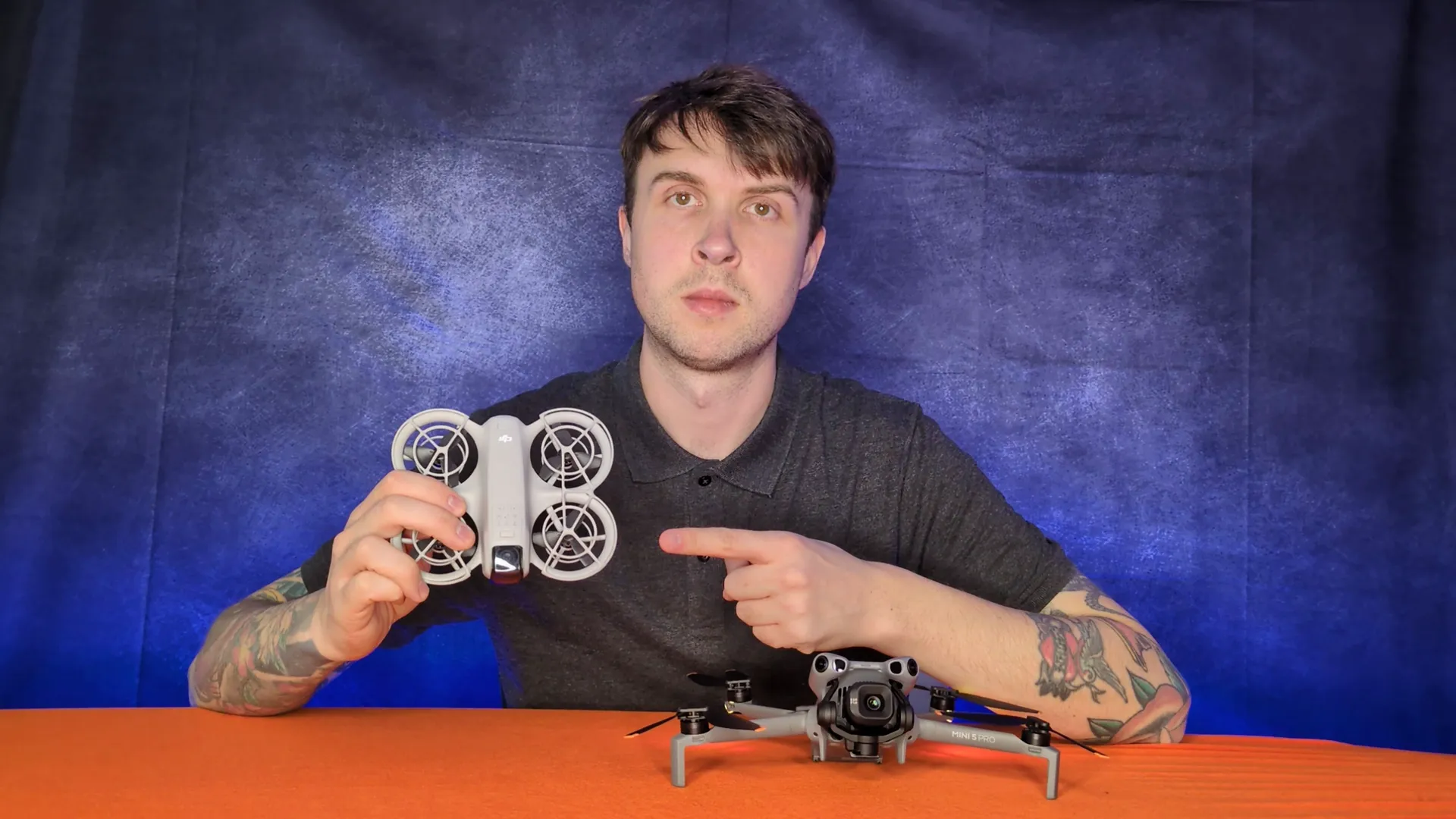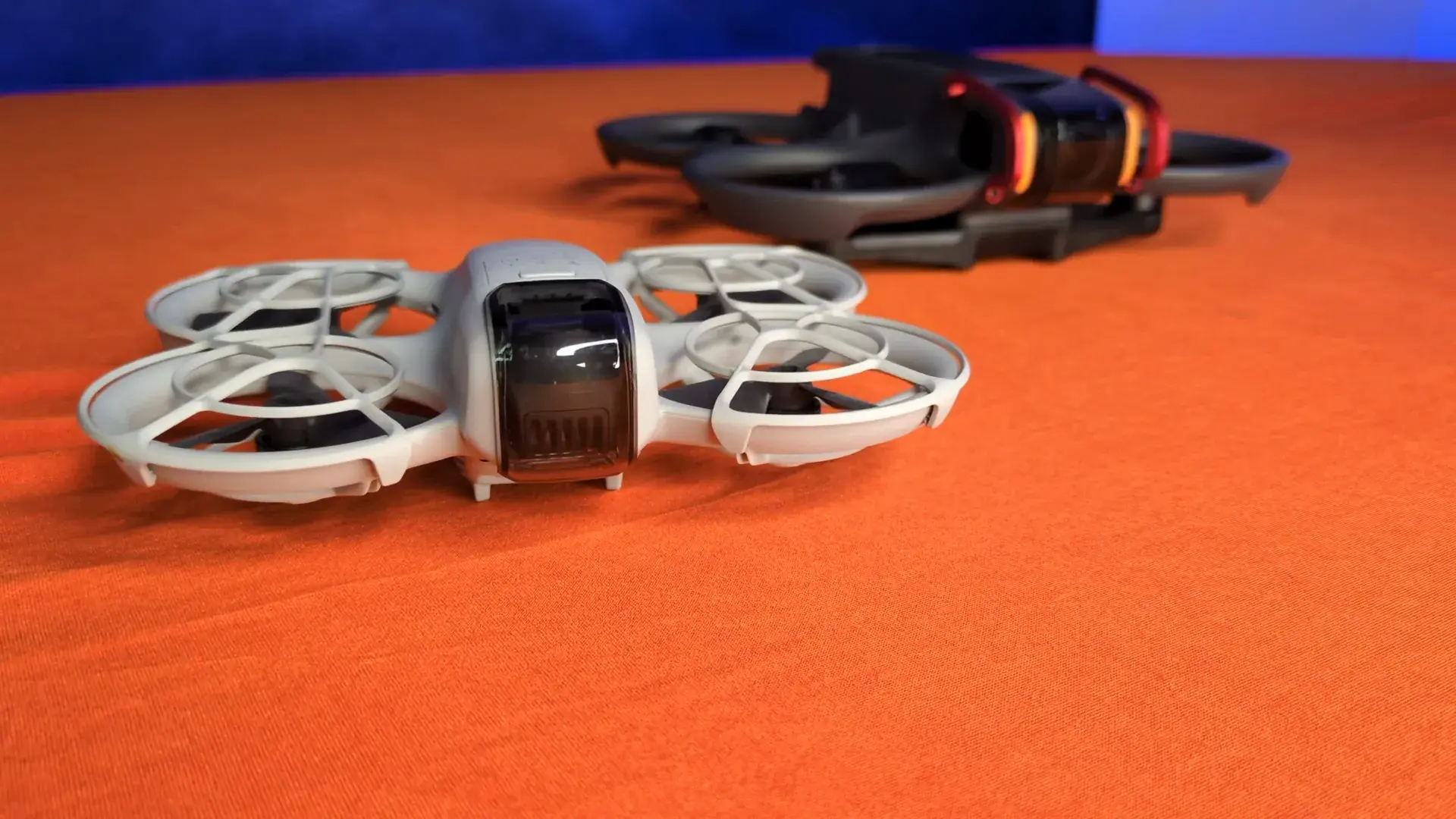
Many new DJI Neo owners are eager to discover the limits of their drone, often asking, "How far can it actually fly?" While the box may state a specific number, achieving that maximum distance in the real world is a different challenge.
The official range is often tested in perfect, lab-like conditions that are hard to replicate.
This guide will walk you through the key factors that determine your drone's true flight distance and provide actionable steps to help you safely maximize its range.

30 Second Summary
- The DJI Neo has an official maximum flight distance of 7 km when flown in a windless environment at a speed of 8 m/s.
- When using a compatible controller with the O4 transmission system, the potential range can extend up to 10 km under ideal conditions.
- The primary factor limiting the drone's flight distance is its battery, which provides a maximum flight time of approximately 18 minutes.
- Real-world flight distance is often shorter due to signal interference; some users have reported losing connection at a distance of only 1 km.
- Environmental conditions like cold weather can also reduce the achievable range, with one test in 7°C temperatures resulting in a flight distance of about 4 km.
Fly in a windless environment at 8 m/s to achieve the maximum 7 km distance
To reach the DJI Neo's official maximum flight distance of 7 km, you must replicate the specific conditions used during DJI's tests. First, check the weather forecast and plan your flight for a day with little to no wind.
The drone was tested in a windless environment, and it has a maximum wind speed resistance of 8 m/s, so flying in anything stronger will significantly impact battery life and range.
Fly in a wide, open area free from obstacles like buildings and trees, which can interfere with the signal. Set the drone to Sport mode to reach the 8 m/s speed used in the test, and try to maintain this constant speed and a consistent altitude.
Finally, to conserve as much power as possible for the flight, ensure video recording is turned off, as this was another parameter of the official test.
Use a compatible controller with the O4 transmission system for a potential 10 km range
The controller you use is critical for unlocking the Neo's maximum potential range of up to 10 km. While you can fly the Neo using only a smartphone, the Wi-Fi connection is designed for short-range flights and is limited to approximately 50 meters.
To go further, you must pair the drone with a dedicated remote controller that uses DJI's advanced O4 transmission system, such as the DJI RC-N3 or DJI RC 2. Before your flight, ensure the controller is fully charged and securely paired with the Neo.
During the flight, always keep the controller's antennas pointed in the general direction of the drone to maintain the strongest and most stable connection possible. This 10 km range is achievable only under ideal conditions with no signal interference.

Manage the 18-minute maximum flight time to maximize distance
The most significant factor limiting your drone's range is its battery. The DJI Neo has a maximum flight time of approximately 18 minutes on a single charge, and this time must cover both the outbound and return journeys. To maximize your distance, always begin with a fully charged Intelligent Flight Battery. While flying, constantly monitor the battery percentage displayed in the DJI Fly app.
It is crucial to set a conservative "Return to Home" (RTH) battery level, such as 30-40%, to ensure the drone has more than enough power to fly back safely, especially if it encounters unexpected wind on the return trip. The 18-minute official flight time is measured by flying the battery from 100% down to 0%, which is not a safe practice and risks losing the drone. Note that using accessories like propeller guards will slightly reduce the flight time to around 17 minutes.
Fly in areas with low signal interference to avoid premature connection loss
Your flight environment heavily influences the drone's signal strength and, therefore, its achievable range. Signal interference is common in urban and industrial areas due to Wi-Fi networks, mobile phone towers, radio antennas, and large metal structures. To avoid a premature loss of signal, choose flying locations in rural or open areas away from these sources of interference. Before you attempt a long-range flight, hover the drone nearby and check the live video feed in the DJI Fly app.
If the feed is choppy or lagging, it indicates a poor signal environment, and you should not attempt to fly far. While the drone's RTH function is designed to activate upon signal loss, it is far safer to maintain a strong connection by flying within a clear line of sight and in low-interference zones.

Account for environmental conditions like cold weather and wind
Environmental factors like temperature and wind directly impact your battery's performance and the drone's range. Drone batteries are less efficient in cold temperatures (below 10°C), resulting in a shorter flight time. To mitigate this, keep your batteries warm in a pocket or insulated bag before flight.
Wind is another critical factor; flying into a headwind consumes significantly more battery power, reducing your effective outbound range. A common mistake is flying out with a tailwind, which makes the flight feel easy, only to have the drone struggle against a headwind on the return journey, risking battery depletion. Always check the wind speed and direction before flying and plan your flight to ensure you have ample battery reserve for a potentially challenging return trip.
Conclusion
Ultimately, the DJI Neo's flight distance is not a fixed number but a dynamic variable that depends on your equipment, flight environment, and piloting decisions. While the drone is technically capable of reaching 7 to 10 kilometers, this requires ideal conditions that are rare in everyday use.
For most pilots, real-world range will be shorter due to factors like signal interference, wind, and battery management. Always prioritize safety by keeping the drone within your visual line of sight as required by UK drone law, monitoring your battery level closely, and planning every flight with enough power for a safe return. By understanding and controlling these variables, you can confidently and safely get the best possible range from your DJI Neo.
About the Author

Written by
Peter Leslie
Peter Leslie is a CAA-approved commercial drone pilot with 10+ years experience and over 10,000 flight hours. He holds the GVC and A2 CofC drone licences with full CAA Operational Authorisation. Peter is a member of ARPAS-UK, the UK's non-profit trade association for the drone industry. He founded HireDronePilot to connect UK businesses with qualified, insured drone operators.
Looking for More Drone Work?
Join the UK's leading network of professional drone pilots and grow your business.
Open Access
Bid on any job - all jobs open to all pilots
Grow Revenue
Access high-value commercial projects
Stay Busy
Fill your schedule with regular work
Related Articles

Our Drone Survey Service In Stirling, Scotland
Bringing you Stirling drone survey data from areas no one else can fly.

How Much Does A Drone LiDAR Survey Cost
Forecasting your drone LiDAR survey cost requires understanding what's hidden beyond the initial quote.

Step By Step Process Of Drone LiDAR Survey
Next, discover the crucial post-flight steps that determine your survey's success.
